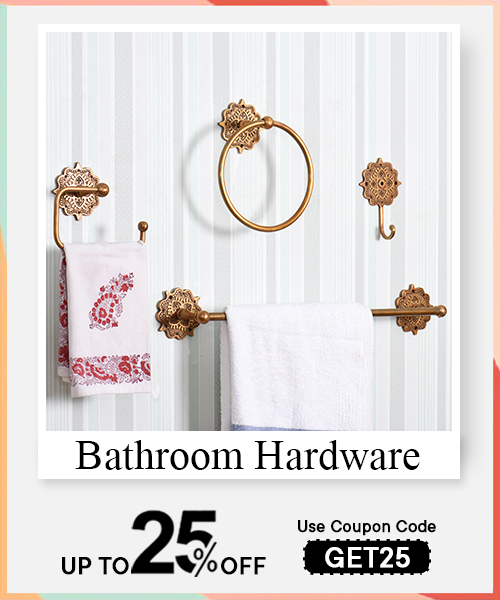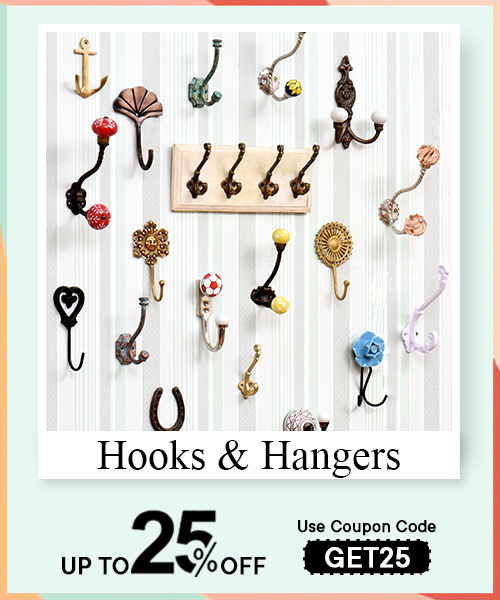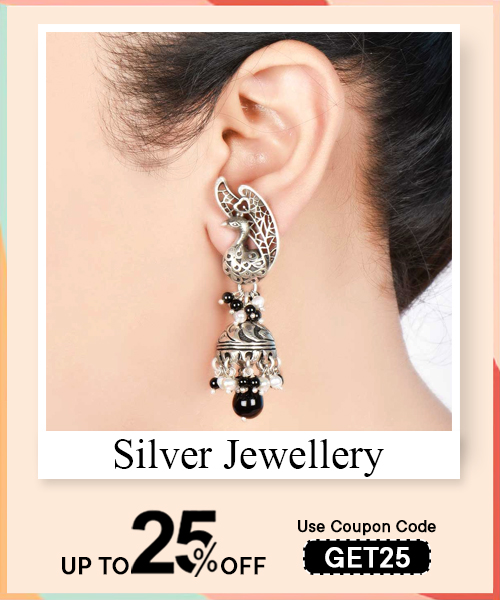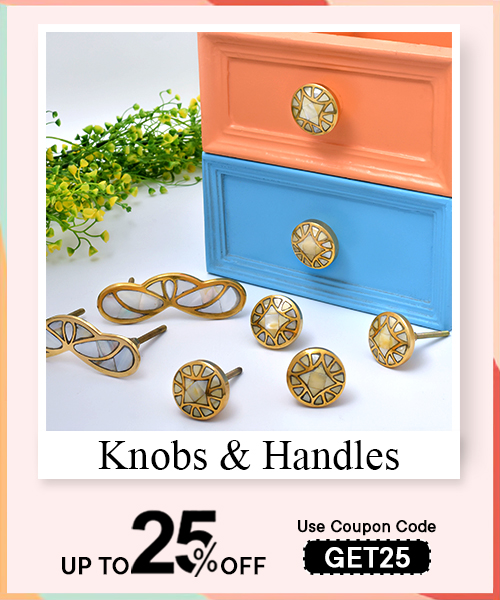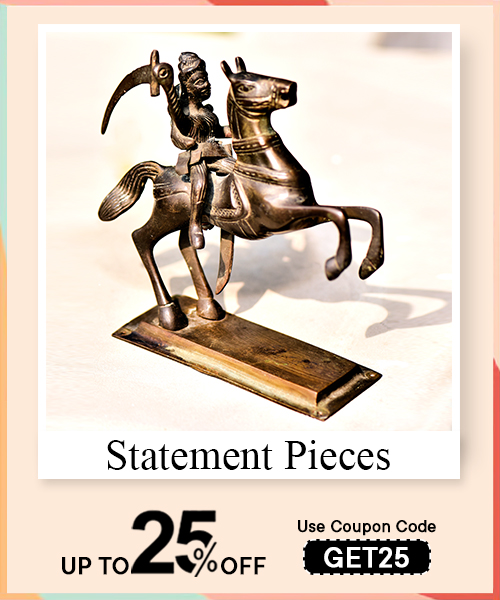Small drawers, when seen through a stylist’s eye, are not limitations but opportunities to showcase precision. Maximising drawer space isn’t about squeezing—it’s about curating. Start by dividing space vertically and horizontally. Use stackable velvet trays for jewellery, felt-lined inserts for delicate items, and mini acrylic bins for sunglasses or scarves. Each layer should whisper intention. A drawer should open like a chapter—smooth, visual, and self-explanatory. Embrace negative space too. A drawer crammed to the edge loses breath; a drawer with rhythm breathes luxury. Like a wardrobe, your drawer should reflect hierarchy, accessibility, and aesthetic quiet.
To fit more accessories into a compact drawer, think in layers—just like fashion styling. Use stackable organisers: the first level for essentials, the second for occasional wears. Roll fabric items like scarves into tubes and tuck them into drawer corners or silicone bins. Insert velvet-lined dividers for rings and earrings, which prevent visual chaos. Prioritise visibility: accessories you can’t see are accessories you won’t use. Add a thin felt board to the inside of the drawer lid (if vertical space allows) for pinning brooches or clip-on earrings. Label each zone mentally or discreetly—this instills habit. Efficiency begins with an editorial mindset: edit the irrelevant, retain the timeless. And always remember—the quieter the layout, the louder the piece shines.
Tiny drawers need architecture—every inch mapped, every angle planned. Use modular compartments tailored to your accessory type: slimline containers for studs and chains, mini trays with ridges for sunglasses, and mesh pockets (adhesive or free-floating) for silk scarves. Drawers should flow in utility order: daily wear in front, occasionals in the back, heirlooms tucked safely beneath. Think topography—vary the heights of compartments so it feels intentional, not improvised. Use neutral or soft-coloured inserts to let accessories pop and keep visual clarity. Finally, employ drawer liners with grip texture; it prevents slipping and adds a refined backdrop. Small drawers should mimic boutique displays—intimate, compartmentalised, and quietly elegant.
Read More : How to Wear and Style Statement Earrings?
For compact drawers, hacks are less about shortcuts and more about structure. Use drawer dividers made of acrylic, bamboo, or felt—each offers a different visual tone. Fold scarves Marie-Kondo style to maximise vertical space. Employ stackable jewellery trays with transparent lids. Store rings upright in foam inserts; hang earrings on thin felt boards slid into slots. For sunglasses, soft pouches can be stacked without risk. One underrated trick: rotate seasonal accessories and store off-season pieces in a labelled pouch at the back. Use drawer labels hidden under lids or on the side edge for invisible structure. Each hack should enhance accessibility while reducing friction. Compact storage, when thoughtfully designed, brings a quiet sense of editorial beauty.
Organising accessories isn’t just about separation—it’s a visual and tactile discipline. Categorising by type gives your drawer a sculpted clarity, while frequency brings rhythm to function. Group necklaces, rings, sunglasses, scarves, and brooches in separate zones. Then, within each, break it down by how often they’re used. Daily-use jewellery should rest closest to the front, while vintage or occasional pieces can rest further back or beneath stackable trays. Scarves meant for monsoon winds don’t belong next to summer silks. When your drawer reflects how you live, it invites daily interaction. Each open reveals calm, not clutter.
To sort by daily use, begin with intuition—what do your hands reach for every morning? Place those items front and centre. Use tiered trays or shallow boxes for these go-to accessories. Divide by type, then frequency within that type. Rings worn every day can sit in a soft foam insert closest to the drawer edge; occasional ones in a lidded case beneath. The rule is: the more frequent the use, the fewer barriers to access. For visual ease, place neutral-toned pieces against darker backdrops and colourful ones on cream or beige. Create a “grab-and-go” section for mornings—a small tray with your weekday rotation. This reduces decision fatigue and keeps the layout intuitive. The result? Function meets style.
Separation starts with texture and volume. Jewellery—small and delicate—requires compartments with velvet or felt. Sunglasses demand soft-lined boxes with shape integrity, so they don’t clash or scratch. Scarves, being pliable, should be rolled or folded vertically in cloth bins. Allocate each category a fixed drawer zone. If space is tight, divide the drawer in thirds: jewellery in inserts on the left, sunglasses cushioned in the centre, scarves rolled on the right. Colour coordination adds harmony—pastels together, metallics grouped, silks side-by-side. Use separators with low visual weight (acrylic or thin felt walls), so you don’t lose the drawer’s elegance. Think of the drawer as a stage—each section lit differently, but part of the same production.
Categorising by frequency transforms chaos into choreography. When items are grouped by how often they’re used, retrieval becomes effortless and habitual. This strategy aligns with how humans operate—what’s used daily should be within muscle memory reach. Weekly accessories can sit behind or below, and special occasion items can be tucked safely, yet respectfully, further back. This hierarchy saves time, reduces visual clutter, and honours your pieces by acknowledging their purpose. It also prevents drawers from becoming a graveyard of forgotten trinkets. When every piece has a designated frequency tier, rotation improves, damage decreases, and the act of accessorising becomes an intuitive ritual—not a rummaging routine.
Drawers aren’t just cavities of convenience; they’re curators of order when composed with intent. Inserts and dividers lend architecture to chaos. They act as spatial stylists—structuring, compartmentalising, refining. Fashion accessories, often delicate and diverse, require these micro-zones to breathe and belong. With acrylic cubes for baubles, velvet-lined trays for rings, or adjustable wooden dividers for scarves and shades, each piece finds a stage. The drawer becomes not a hiding place, but a frame of display. The act of opening it feels ritualistic—reassuringly rhythmic, almost therapeutic. It isn’t merely about space-saving; it’s about revering the small, beautiful things that dress identity.
Drawer dividers turn a messy collection into a curated ensemble. Think of them as the editor of your accessory drawer—highlighting, segmenting, eliminating friction. Without dividers, chains tangle, pins vanish, and earrings lose their twins. With them, each category gains a home: a velvet-lined slot for bangles, slim separators for watches, tiny square inserts for rings. They make retrieval instinctive, intuitive—accessories are not just stored, they are styled into place. This organisation system reduces time and increases the frequency with which items are actually worn, eliminating the habit of reaching for the same familiar pair. It’s spatial storytelling—each section holding its own narrative of texture, function, and aesthetic. These dividers also protect from scratches and oxidation, acting as both curator and conservator. When the layout reflects thoughtful design, the drawer becomes less of a storage unit and more of a jewellery atelier.
The best inserts are those that complement the materials and usage of the items being stored. Velvet-lined trays elevate rings and delicate necklaces, ensuring softness and elegance while preventing scratches. Acrylic modular grids are transparent—offering visibility without disruption—and work beautifully for items like studs or brooches. Felt-lined bamboo compartments blend sustainability with structure, ideal for metal-based items like chunky bracelets or statement cuffs. Stackable drawer inserts with adjustable compartments offer flexibility—especially when fashion accessories evolve with seasons. Inserts with anti-slip textures are perfect for delicate items like hairpins or dainty anklets. Mirror-backed dividers bring a boutique touch and create light bounce, ideal for showcasing in a more performative storage drawer. It’s less about the insert material and more about its ability to blend with your accessory personality—romantic, minimalist, bold, or eclectic.
Absolutely—and DIY dividers often reflect personal style more intimately than store-bought ones. Cardboard, balsa wood, and foam boards become crafting companions. Begin by measuring the interior of your drawer, then cut your materials to fit with snug precision. Wrap the dividers in fabric—velvet for a rich, luxurious finish or linen for a raw, earthy feel. Use hot glue or L-shaped joints for durability. For jewellery, create smaller slots using intersecting vertical and horizontal cuts. For larger accessories, opt for wider frames. Paint or stain wood pieces to match your decor. You can even reuse boxes from perfumes or mobile phones—upcycling meets utility. A DIY setup doesn’t just save money—it gives emotional value to everyday rituals. Opening that drawer becomes personal—each corner speaking of care, intention, and aesthetic instinct. DIY dividers also allow constant reinvention as your collection grows or shifts in style.

A label is more than a tag—it’s a whisper of memory, a visual rhythm. Labelling transforms drawers into visual diaries—method meets poetry. Whether embossed in gold foil, written in cursive on kraft paper, or designed in soft pastels for colour-coded clarity, labels create intention. They anticipate your needs—“Charms,” “Brooches,” “Golds,” “Boho”—each a doorway to personal moodboards. Labelled storage doesn’t just facilitate access; it enhances the aesthetics of containment. It removes hesitation. No digging. No doubt. The drawer opens, and everything greets you by name. Thoughtful labelling weaves function into visual design—it’s where identity meets arrangement.
To label effectively, choose a system that balances visibility with visual charm. For quick access, font matters—use bold, sans-serif for clean reads, or calligraphy if you're leaning into a vintage aesthetic. Clear adhesive labels on transparent inserts allow for minimalist clarity, while wooden or brass label holders lend a more crafted, antique touch. Use consistent phrasing: one-word categories like “Hoops,” “Chains,” or “Pins.” Stick to horizontal alignment for uniformity and ease. Colour-coded labels also help—blues for silver items, gold for gold-toned jewellery, blush for vintage or handmade accessories. Position the labels top-centre of each section or at the edge of drawer lips for immediate visibility. You can even use washi tape frames or engraved tags tied with twine for a textured, rustic feel. Whatever the method, ensure it fits your visual rhythm. A label should never clash—it should guide like a soft spotlight.
Creativity here lies in the material, placement, and storytelling. Mini chalkboard tags clipped to the drawer handles allow for handwritten changes with ease and charm. Use pressed floral stickers to signal seasons—roses for romance-themed pieces, ferns for nature-inspired trinkets. Embroidered fabric swatches with stitched names can act as tags for cloth-covered drawers. Brass embossers, leather patches stamped with initials, or handcrafted clay tiles engraved with accessory types can also add artisanal flair. Magnetic tags with interchangeable words offer modernity and flexibility. Or, use photo tags—attach a small image of the actual item category inside, creating visual cues. Even scent-coded wax seals, subtle but memorable, can guide the hand and mind. The tag doesn’t just mark; it makes the drawer part of your style language. It becomes tactile, intimate, and expressive—less a function, more a flourish.
Labels reduce mental load. Every time you open a drawer, you’re spared the guesswork—what was where, what went missing, what got tangled. Labels introduce a system of navigation that becomes second nature. They build visual muscle memory. Over time, your hands know where to go. But beyond utility, they offer harmony. The layout becomes consistent, intentional, like a curated wardrobe or a library with colour-coded spines. Fashion accessories, with their diverse textures and shapes, thrive in sorted environments. Labels also enhance rotation—helping rediscover overlooked items, adding freshness to styling choices. And emotionally, labels give meaning. “Heirlooms,” “Statement Nights,” “Everyday Edits”—each label isn’t just a category; it’s a moment, a story. It shapes how you relate to what you wear. Order becomes not restrictive, but poetic—a symphony of objects in synchrony with your identity.
Read More : The Best Silver Necklaces for Different Hair Styles and Colors
A well-curated drawer isn't just a container—it’s an intimate landscape of daily rituals. Think of frequently used accessories like characters in a play; they must wait in the wings yet be ready to step into the spotlight. A velvet-lined tray within the top drawer invites rings, watches, and cufflinks to rest with grace. Acrylic inserts with soft gold trims separate items by utility but unite them in style. When curated thoughtfully, even a drawer becomes a design vignette—a quiet stage where elegance meets purpose. Let your accessories breathe, belong, and beckon, not just rest unseen.
Top drawers, often neglected, should be the altar of convenience. It’s best to dedicate the first chest drawer to pieces that move with your rhythm—your daily bracelet, minimalist studs, slim rings, or the chain you wear with casual tees. Arrange them in microfiber or felt-lined trays that prevent scratches and elevate tactile pleasure. Consider layering trays—stackable but sliding—to create a two-tier visual. Add a tiny mirrored lid or a soft LED sensor light for night-access. The key is vertical space usage without chaos. Reserve the drawer’s rear corner for a small fragrance vial or fabric pouch for scent layering.
Daily wear deserves ceremony, not carelessness. Use minimalist drawer dividers—matte acrylic or bamboo—to sort by type or outfit match. A single color palette (beige, charcoal, or dusty rose) within the drawer brings cohesion. Velvet roll inserts for rings and slotted trays for earrings ensure items sit upright, visible at a glance. Avoid plastic zip pouches or dull boxes; go for sculpted ceramic bowls or suede pouches nestled beside one another. For a personal touch, add a hand-painted label or a dried flower for scent and charm. Functional doesn’t mean cold—it means styled with intention.
Clarity comes with editing. Begin by reducing—keep only what echoes your current aesthetic and life pace. Then, use transparent dividers or trays with soft-etched bottoms so items appear curated, not crammed. Keep your colour palette consistent—nothing breaks visual rhythm like clashing tones. Dedicate a mini section to mood-based sorting (e.g., "Work," "Evening," "Home"). Acrylic risers or stepped inserts let items peek without piling. Lidless is key—items should be visible, touchable. A drawer shouldn't scream abundance but whisper purpose. Leave one corner intentionally empty; negative space is elegance unspoken.
Function alone flattens a drawer into utility. Introduce aesthetic layers—a texture of velvet against brass handles, the curve of wooden dividers, the muted glint of satin-finished labels. It’s not about maximalism but curation—each item has a visual weight and a rhythm in the arrangement. A harmonious drawer invites pause, admiration, even memory. Think of drawers as top-down mood boards where accessories, scents, and color tones flow in harmony. Design becomes emotion when placement tells a story. This balance between order and ornamentation becomes the hallmark of elegant living.
Start with the base. Line the drawer with linen fabric or faux suede in muted tones—moss green, dove grey, or maroon—to add richness. Use compartmentalised boxes in tonal harmony or material contrast (wood with velvet, glass with brass). Avoid overfilling; let each item own its space. Color-coordinate accessories—pearls beside whites, silver with greys, gold with earth tones. Incorporate soft lighting—drawer motion LEDs or a battery-operated strip under the lid. Drawers become sensory—what you see, touch, and smell. Add a scented sachet or a sliver of sandalwood for a mood imprint. Let aesthetics linger after function ends.
Material is memory. Choose organizers made of rattan, linen, or frosted acrylic to blend texture and elegance. Use minimalist typography labels—embossed or handwritten—for charm. Curate not just by type but by lifestyle: travel, work, casual. Consider inserts that slide or lift, adding dimensional use of space. Transparent layers help with visibility while velvet pads bring softness. Introduce rhythm—alternate compartments with breathing space. An antique drawer knob, a painted bottom panel, or brass-edged compartments elevate the narrative. Drawers, like good interiors, are not just seen—they are felt. Design must provoke a sigh, not just serve.
Begin by respecting the drawer’s proportions. Use a tri-fold system—front for daily use, middle for occasional, back for backup. Decor isn’t just what’s outside; it’s the inside architecture. Let textures carry the story: soft suede trays, linen dividers, polished wood lids. Every element should whisper harmony. Add a small accent—perhaps a mini framed quote or a pressed flower in resin to rest inside the drawer. Keep items in odd numbers for visual movement—two rings with one brooch looks styled, not staged. Never force symmetry; balance arises from intention. A drawer, when loved, becomes a little world of its own.
Swapping seasonal accessories is not just about maximizing space—it's about bringing clarity and purpose to your everyday rituals. When drawers are curated to fit the needs of a specific season, dressing becomes intentional. In summer, lightweight scarves, canvas belts, shell jewelry, and tinted sunglasses should take the top tier, while winter’s woolen gloves and heavier accents rest below. As the weather shifts, so should your drawer layers—mirroring nature's own rhythm. This rotation builds a visual narrative that evolves, refreshes your aesthetic, and reduces daily decision fatigue. Think of your drawer as a living canvas—one that adapts and breathes with time.
Start by decluttering with honesty—only keep what serves the current season’s function and mood. Use vertical stacking with shallow dividers or mini boxes to group by type: warm-toned accessories for autumn, florals and pastels for spring. Utilize vacuum-sealed pouches or fabric roll-ups to tuck away off-season items under beds or on higher shelves. Drawer inserts can act like chapters in a book—each season gets a page. Focus on layering, not stuffing—think velvet trays for winter jewelry, linen-lined boxes for summer trinkets. Keep a rotating “transition box” nearby for weather surprises. Ultimately, curate with intent, not impulse. Let function guide form.
Rotating builds both aesthetic clarity and emotional relief. When drawers are crowded with irrelevant pieces, finding what resonates with the day becomes mentally taxing. Seasonal rotation removes noise. In summer, you avoid digging past woolen scarves to reach a beaded anklet. In winter, thick socks don’t tangle with chiffon scrunchies. This rhythm encourages rediscovery; when stored pieces return, they feel fresh again—like shopping your own collection. It also safeguards fabrics from damage due to unnecessary wear or exposure. Psychologically, it affirms control over space and time, echoing seasonal rituals like wardrobe change or deep cleaning. It’s not just about space—it’s about flow.
Read More : Jewelry Storage Ideas You Will Want to Use
Use collapsible fabric boxes, drawer-friendly vacuum bags, or under-bed bins with labels. Categorize by accessory type and mood—e.g., "Winter Luxe" or "Monsoon Earthy." Store away delicate pieces in felt-lined cases, while chunkier items like belts or boots can go in breathable canvas sacks. Avoid plastic wrap—use acid-free paper to wrap metals and prevent tarnishing. Store vertically where possible—like books on a shelf. Rotate drawers like a seasonal archive. Keep a visual log or a mood board to remember what’s stored away. Think museum, not attic. Preservation with a purpose. Let storage reflect your style—not become its graveyard.










